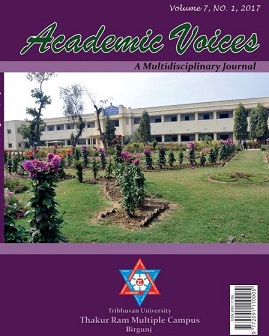Sati Custom in Nepal: A Historical Perspective
DOI:
https://doi.org/10.3126/av.v7i0.21359Abstract
Sati custom was a widow-burning custom prevalent in Hindu community in Indian sub-continent. This custom refers to a woman who burns herself willingly on the funeral pyre of her husband. The rationale behind the origin of sati custom was that a husband needed all the worldly belongings like wives also after his death. According to another notion, the fighting tribes of earlier times were proud of their women, thus they did not like to leave women astray after the death of their husbands, rather they preferred to kill them. So, they originated sati custom. The custom of sati was originally confined to royal families and to some high ranking noble families. We find the references of sati custom in many ancient literatures. In the age of 4th and 5th centuries B.C., the custom of sati was prevalent, which is confirmed by the writings of the Greek writers. In the history of Nepal, the Changu pillar inscription of 464 A.D. mentions about the custom of sati. This custom was more prevalent in later age where we find that there were one to thirty-three women in number were forced to become sati. Among them, there were wives, concubines and female slaves also. Right from the beginning, we see that the custom of sati, was not necessary. It was considered as a social evil. In India, due to the efforts of social reformers, the custom of sati was stopped in 1829 A.D. In Nepal, the first attemptin this end was made by Jang Bahadur Rana. In the period of Prime Minister Bir Shamsher (1885-1901 A.D.) the law about this was amended. Finally, Prime Minister Chandra Shamsher, on his 58th birthday, 8th July, 1920 A.D., enforced a legislation abolishing the longstanding horrible custom of sati. In this way, the custom of sati ended in Nepal.
Downloads
Downloads
Published
How to Cite
Issue
Section
License
© Academic Voices: A multidisciplinary Journal
All rights reserved. No part of this journal may be reproduced in any form or by any electronic or mechanical means, including information storage and retrieval system, without permission in writing from the publisher/writers, except by a reviewer who may quote brief passages in a review.




